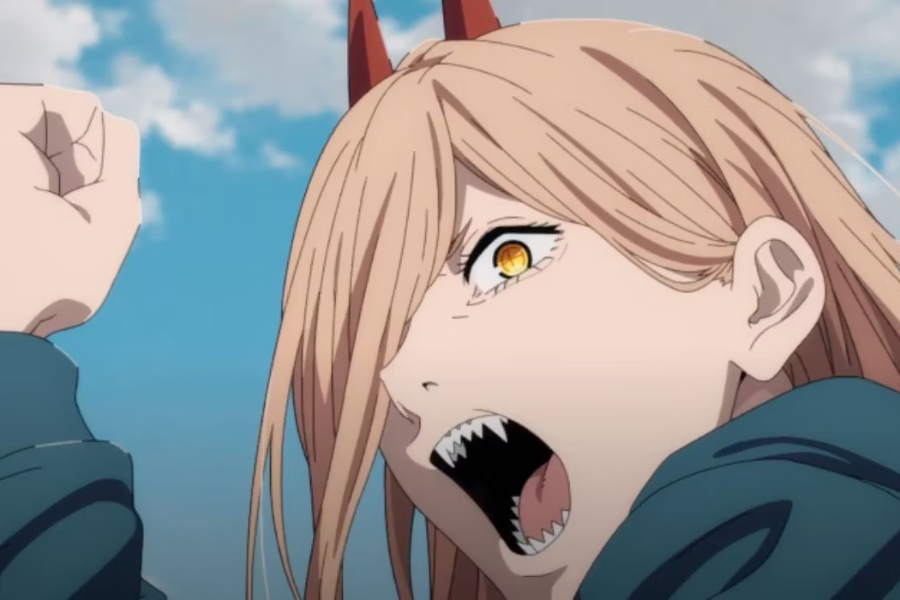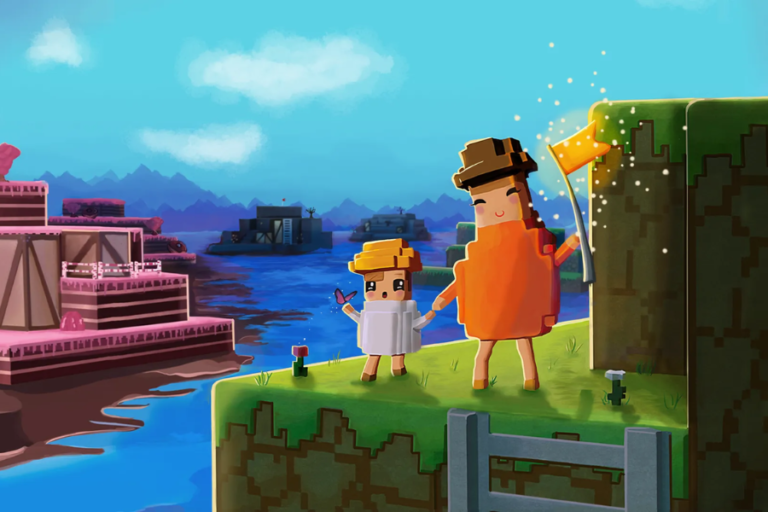CSM 163: New Threats and Personal Struggles Revealed
Introduction
The world of Manga and anime is a sprawling landscape full of riveting tales and multifaceted characters, and few series capture these elements as compellingly as Chainsaw Man. Known for its dark themes, intense action, and deeply layered characters, Chainsaw Man has earned a massive following, sparking widespread discussion in fan circles across the globe. This article dives into the latest chapter of Chainsaw Man, Chapter 163, or “CSM 163,” where we encounter new antagonists, complex inner conflicts, and heightened stakes that propel the series forward. Whether you’re a seasoned follower of the series or just dipping your toes into its chaotic narrative, this analysis of CSM 163 will offer insights into the pivotal developments that make this chapter truly unforgettable.
The Wake-Up: Reality vs. Dream

CSM 163 opens on an unsettling note, where the boundaries between reality and illusion blur, forcing the characters into confrontations with their deepest insecurities. Haruka, Asa, and Denji each experience moments of introspection and realization that test their individual resilience. Haruka’s rude awakening is a moment of reckoning, as he finds that his group’s recent actions haven’t captured the public’s attention. Rather than recognizing their efforts, the media is fixated on Koma Komagawa, a public figure whose involvement with the enigmatic Chainsaw Man Church poses a far greater threat. This oversight deeply affects Haruka, shaking his confidence and casting doubt over his connection to the Chainsaw Man Church and his role in this chaotic world.
On the other side, Asa finds herself caught in a similar predicament. Once celebrated as a powerful Devil Hunter, she now faces a decline in her status and self-worth, especially after the physical and symbolic loss of her arm. Asa’s physical limitations reflect her internal conflict, embodying her struggle with identity and worth in a society that only values people as long as they maintain their power and status. Her journey sheds light on the societal pressures that accompany fame and how fleeting public favor can leave individuals grappling with self-worth when the spotlight fades.
Meanwhile, Denji—the heart of Chainsaw Man—awakens to a stark, painful reality. His encounter with Katana Man, an old adversary fueled by vengeance, forces Denji to confront his own unresolved traumas and face the consequences of past battles. While the surreal is a staple of Chainsaw Man, Denji’s moments of grounded, raw confrontation in CSM 163 reinforce the stakes at play. These experiences anchor the storyline, underscoring the intense, personal ramifications for each character involved.
The New Threat: Chainsaw Man Church
CSM 163 introduces the Chainsaw Man Church, a powerful organization led by the charismatic yet dangerous Koma Komagawa. This antagonist doesn’t fit the typical mold; Koma, a prominent figure with media influence, uses her public presence to advance the church’s agenda, pushing society into chaos. Koma’s ability to manipulate public perception and amass followers gives the Chainsaw Man Church a dangerous edge, transforming people into Devils and stripping them of their humanity.
As a skilled orator and influential figure, Koma embodies the manipulation of media, raising unsettling questions about free will and control. Her actions hint at a deeper commentary on the susceptibility of individuals to charismatic figures in positions of influence, a theme that resonates beyond the fictional world. Through Koma and the Chainsaw Man Church, Chainsaw Man explores the vulnerabilities of personal identity, the malleability of social opinions, and the erosion of humanity when autonomy is overpowered by manipulation and the loss of self.
Group Dynamics and Personal Struggles
One of the hallmarks of CSM 163 is its exploration of group dynamics and how the characters’ personal struggles affect their relationships and actions. Each character’s journey brings a distinct perspective to the group’s complex web of interactions. For instance, Haruka’s realization that their collective actions seem insignificant challenges his sense of purpose and role within the group. As his confidence is undermined, Haruka must grapple with redefining his goals and place among his peers.
Asa’s struggle with self-worth and identity seeps into her interactions with others, manifesting as an internal desire for validation amidst external chaos. This yearning for acceptance and recognition shapes her responses and decisions, ultimately affecting how she relates to those around her.
Denji’s struggles, both physical and emotional, contribute yet another layer to the group’s evolving dynamic. His encounter with Katana Man reopens old wounds, and his interactions with Yoru, who dismisses Denji’s humanity in favor of raw strength, expose the fragility of alliances and loyalty in this unpredictable world. Yoru’s detachment reflects a pragmatic, if cold, approach that prioritizes power over sentiment, underscoring the rifts within the group.
Nobana’s internal conflict further complicates the dynamic, as her sense of unease stands in contrast to Haruka’s desire for unity. While Haruka views sticking together as the best path forward, Nobana’s concern for self-preservation sparks debates about the most strategic course of action. This conflict illustrates the theme of survival in a volatile world, where unity and self-interest collide.
The Road Ahead: Decisions and Dilemmas
Facing a new enemy and mounting internal discord, the group in CSM 163 faces tough choices. Haruka is the most vocal advocate for solidarity, believing that strength in numbers offers the best chance for survival. However, Nobana’s rising anxiety about the group’s vulnerability forces the group to confront tough questions about their safety and priorities. This tension introduces a recurring theme in Chainsaw Man: the balancing act between individual needs and collective responsibility. The group’s decisions have profound implications for each member’s survival, forcing them to consider the risks and potential sacrifices they are willing to make.
These choices also reflect a broader theme of accountability, with each member facing the consequences of their actions. The narrative in CSM 163 makes it clear that the characters are shaping their fates with every decision they make. As the story unfolds, it becomes evident that the battles they face aren’t just against Devils but also against their inner struggles and limitations.
Conclusion
CSM 163 of Chainsaw Man delivers an intense chapter that offers more than just action; it serves as a deep exploration of each character’s personal journey. As Haruka, Asa, and Denji navigate newfound challenges, they encounter personal truths that test their resolve and reveal new layers of their complex personalities. The introduction of the Chainsaw Man Church and Koma Komagawa adds a formidable obstacle, setting the stage for future confrontations and new developments.
Through its exploration of group dynamics, individual vulnerabilities, and moral ambiguity, CSM 163 creates a thought-provoking experience for readers. The chapter’s themes of identity, societal pressure, and survival resonate with readers, reminding them of the complex realities characters must face in this dark and twisted world.
For fans of Chainsaw Man, this chapter is more than just another episode in the series; it’s a critical moment that shapes the story’s future. As the characters confront their fears, desires, and decisions, readers are left eager for what lies ahead. The world of Chainsaw Man continues to captivate, challenging readers to ponder their own boundaries between dreams and reality, loyalty and self-interest, and the ever-elusive quest for identity in a chaotic world.
FAQs
What is the primary conflict in Chainsaw Man CSM 163?
The main conflict centers around the rise of the Chainsaw Man Church, led by Koma Komagawa, and the impact it has as it transforms people into Devils, posing a grave threat to society.
How do characters in CSM 163 deal with personal struggles?
Characters such as Haruka, Asa, and Denji each face unique personal challenges that shape their decisions and interactions. From struggles with self-worth to clashes over loyalty, each character’s internal conflicts add complexity to the group dynamic.
What are the main themes in Chainsaw Man CSM 163?
This chapter delves into themes of identity, societal control, survival, and the nature of good versus evil within a world filled with chaos and unpredictability.
Who is Koma Komagawa in Chainsaw Man?
Koma Komagawa is a new antagonist introduced in Chapter 163 who leads the Chainsaw Man Church. Her media influence and charismatic personality make her a dangerous figure, as she seeks to spread chaos and control the populace by transforming them into Devils.
What decisions does the group face in CSM 163?
In this chapter, the group grapples with a dilemma between prioritizing safety and preserving solidarity, with each choice having potential repercussions for their survival and unity.
Keep an eye for more news & updates on Internal Breaking!






